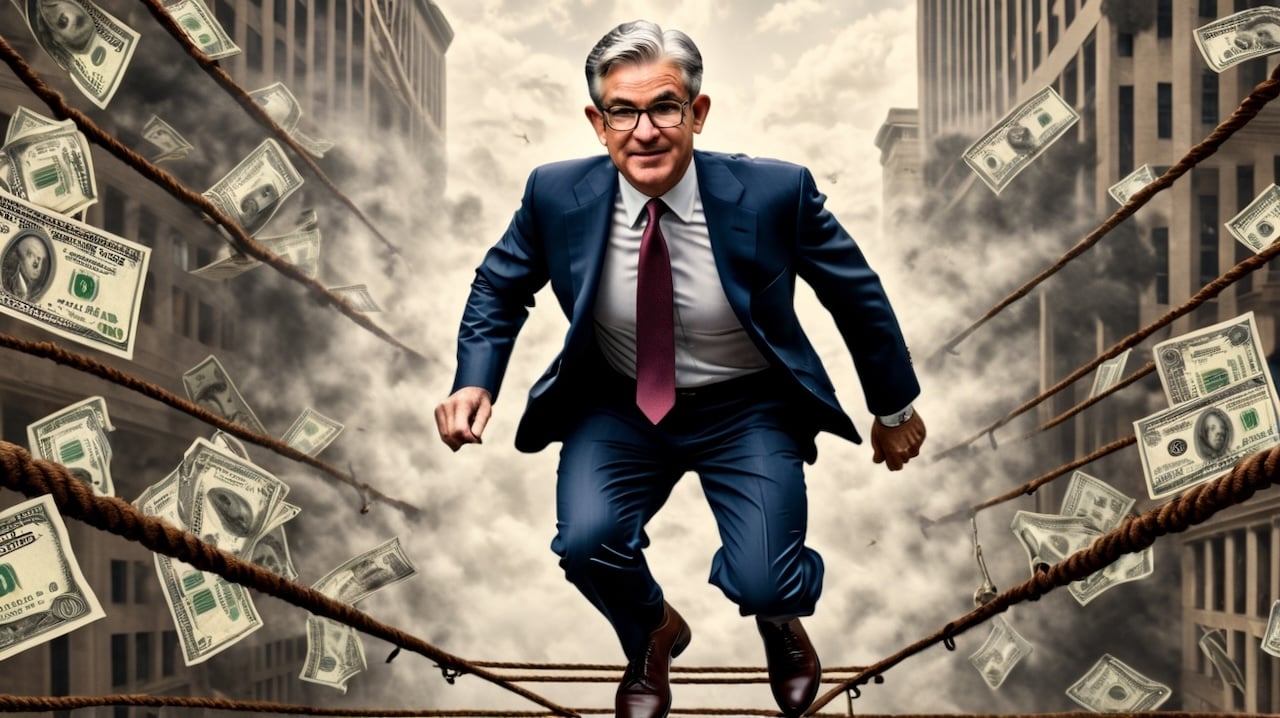(Mike Maharrey, Money Metals News Service) Unsurprising and bland. Those words pretty much sum up the November Federal Reserve meeting.
As anticipated, the Fed cut interest rates by another quarter point. This sets the current interest rate in a range between 4.5 and 4.75 percent.
The messaging coming out of the FOMC meeting wasn’t much more remarkable.
Federal Reserve Chairman Jerome Powell walked a tightrope, being very careful not to send any strong signals about the trajectory of monetary policy.
The FOMC statement noted that “economic activity has continued to expand at a solid pace” but noted that “labor market conditions have generally eased.”
As far as inflation, the FOMC said it “has made progress toward the Committee’s 2 percent objective but remains somewhat elevated.”
The word of the day was “data.”
The FOMC statement said, “In considering additional adjustments to the target range for the federal funds rate, the Committee will carefully assess incoming data, the evolving outlook, and the balance of risks.”
Powell reiterated this “data dependence” in his post-meeting press conference, emphasizing that the central bank is not on any “preset course” and asserting, “We will continue to make our decisions, meeting by meeting.”
Powell went on to paint a picture of a Fed poised to pivot toward any direction necessary.
“If the economy remains strong and inflation is not sustainably moving toward 2 percent, we can dial back policy restraint more slowly. If the labor market were to weaken unexpectedly, or inflation were to fall more quickly than anticipated, we can move more quickly.”
In other words, no matter what the Fed does going forward, Powell can plausibly say he told you so.
While giving no hint at a timeline, Powell indicated that the general trajectory of interest rates will be lower. He said the lower bowering costs are necessary for the Fed to achieve its dual mandate of price stability and maximum employment.
This is perhaps the most revealing statement Powell made. It shows that the central bankers still worry that this higher interest rate environment will crack the bubble economy. And they’re right. This economy can’t function in this rate environment because it is loaded up with debt.
The fact that the U.S. spent over $1 trillion in interest expense in fiscal 2024 reveals the extent of the problem.
Interestingly, Powell insisted that monetary policy is still “restrictive,” even with the most recent cut.
The Chicago Fed’s National Financial Conditions Index undercuts Powell’s claim. As of Nov. 1, the NFCI came in at -0.52. A negative number indicates historically loose financial conditions.
In fact, the NFCI has been showing loose financial conditions for months, even at the peak of the Fed tightening cycle. This hints at the fact that the central bank never did enough to truly rein in inflation.
Powell insisted that the election of Donald Trump would have “no effect on our policy decisions,” at least in the short term. He did concede new policies coming out of the next administration could have an impact on future monetary policy decisions insofar as they change the economic situation.
“Just in principle, it’s possible that any administration’s policies or policies put in place by Congress could have economic effects over time. So, along with countless other factors, forecasts of those economic effects would be included in our models of the economy and would be taken into account.”
In other words, keeping with the theme, Powell gave no hint as to what a Trump presidency may mean for the trajectory of interest rates.
Interestingly, Powell did say he would not resign if Trump asked him to, and he insisted the president couldn’t fire him because it is “not permitted under the law.”
My impression of the Fed’s trajectory hasn’t changed much since it surprised us with a supersized rate cut in September. I still believe the Fed has surrendered to inflation.
Even before the rate cuts, the Fed was already winding down the inflation fight. The central bank loosened monetary policy when it quietly announced that it would begin to taper balance sheet reduction in June.
Since then, the money supply has been increasing. This is, by definition, inflation.
And inflation will continue to increase as the Fed cuts rates – no matter how quickly or slowly it precedes.
How long it takes for this inflationary pressure to show up in consumer prices remains to be seen, but everybody should be aware that inflation is far from dead and buried.
Mike Maharrey is a journalist and market analyst for MoneyMetals.com with over a decade of experience in precious metals. He holds a BS in accounting from the University of Kentucky and a BA in journalism from the University of South Florida.

